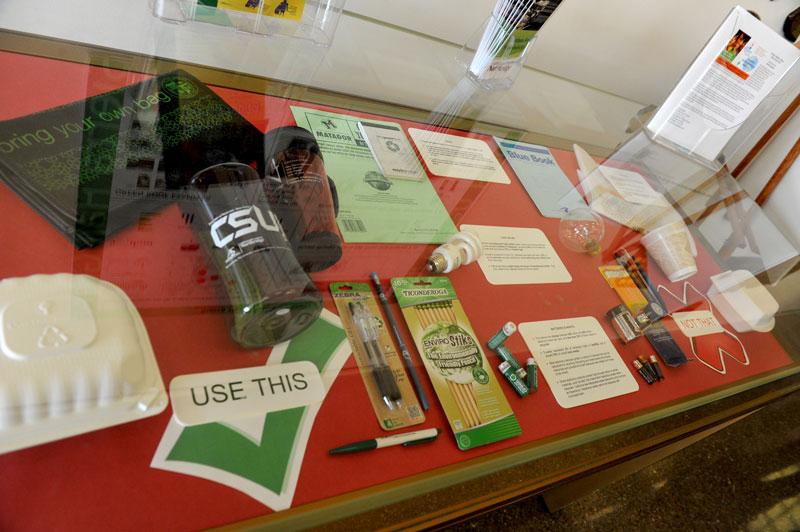
The Oviatt Library is hosting a sustainability exhibit in the main lobby until April 1.
Sustainability is the “development that meets the needs of the present without compromising the ability of future generations,” according to the Brundtland Report organized by United Nations in 1987.
The exhibit features posters, models and displays that show what CSUN groups are doing to decrease the campus’s carbon footprint.
There are plans for a farmers market, a student commuting analysis, a tree mapping study, descriptions of the campus rainforest, green roof proposals, the new recreation center plans and what students can do to be eco-friendly in their day-to-day lives.
Helen Cox, the director of the Institute for Sustainability, is an exhibit coordinator and said students can use the exhibit as a resource for contact information to get involved.
“Generally we’ve got the word out to A.S. and the faculty but we’re trying to avoid preaching to the choir,” Cox said. “We would be presenting material to people who already know about it. We’re trying to reach students who don’t know about sustainability to get the word out there. The first step is to raise awareness and then coming from that, people get interested and want to find out more.”
Cox said the ‘Use This – Not That’ display is great for students to know how to simply exercise their buying power by choosing green products. The glass case has one side devoted to things that are beneficial to the environment and the other shows what not to use.
The materials on display include the comparisons between green books and blue books at the library, Ticonderoga EnviroSticks and regular pencils, plastic bags and personal canvas bags and more.
There are also suggestions for recycling batteries that can be reused so that new metals don’t have to be mined.
Another important aspect of the exhibit was to show students that many other students are already involved with campus projects, Cox said.
One student project on display was the study of how CSUN students get to campus. Students’ addresses were taken anonymously from SOLAR enrollment information, the project stated.
Geographical Information Systems (GIS) software was then used to map the 38,210 addresses. This is a process known as geocoding. The study excluded out-of-state addresses and students who lived in dormitories. The average driving distance to campus is 16.23 miles and more than 80 percent of these students commute by car but fewer than one percent carpool. The commuters then create 31,505 tons of carbon emissions every year.
CSUN student Malorie Ventura, 24, is an art major and said she commutes 30 miles to CSUN three days a week. She said she has been looking for someone to carpool with and that there should be a carpool database for CSUN students to find other commuters in their area. “Any little effort is at least an effort,” said Ventura.
Hedy Carpenter, a member of the Core Greening Team, is an exhibit coordinator and said the library exhibit shows students there is a future in green jobs and awareness of the issue is critical.
“As the world turns greener, there is a fair amount of jobs and it seems the momentum is good right now,” Carpenter said. “With such a big campus, the exhibit is a way so people can see all things we’re doing. We’re moving in the right direction.”
Hopefully it is this awareness and general appreciation that will propel students to get involved, Carpenter said.
“To be outdoors is an amazing thing and to think in our lifetime those things could go away is really sad,” Carpenter said. “If you’ve never seen a tree then nobody would care. It’s so important for future generations to care and understand how to meet its needs while not destroying the planet.”




